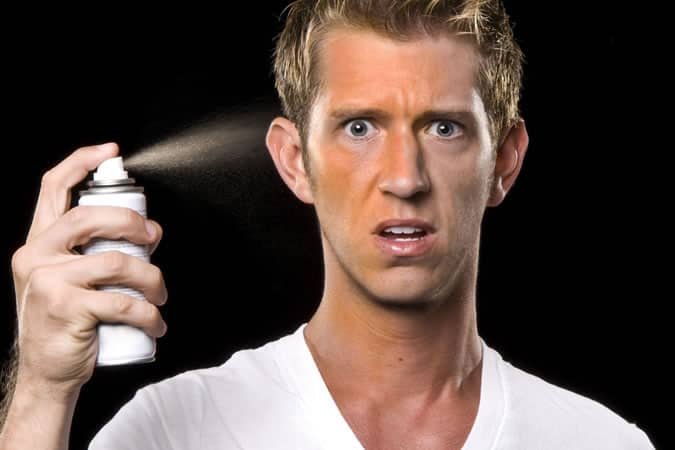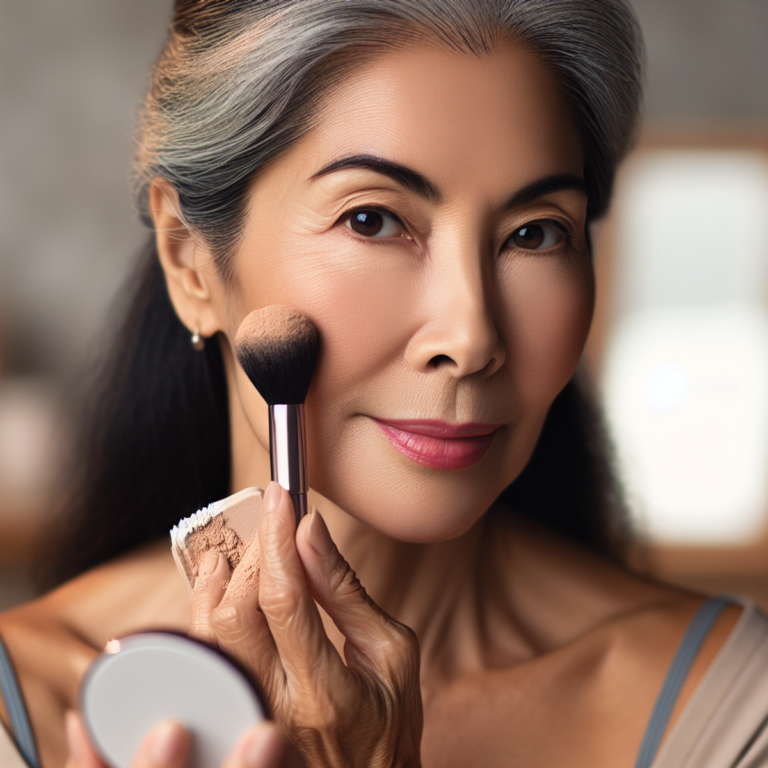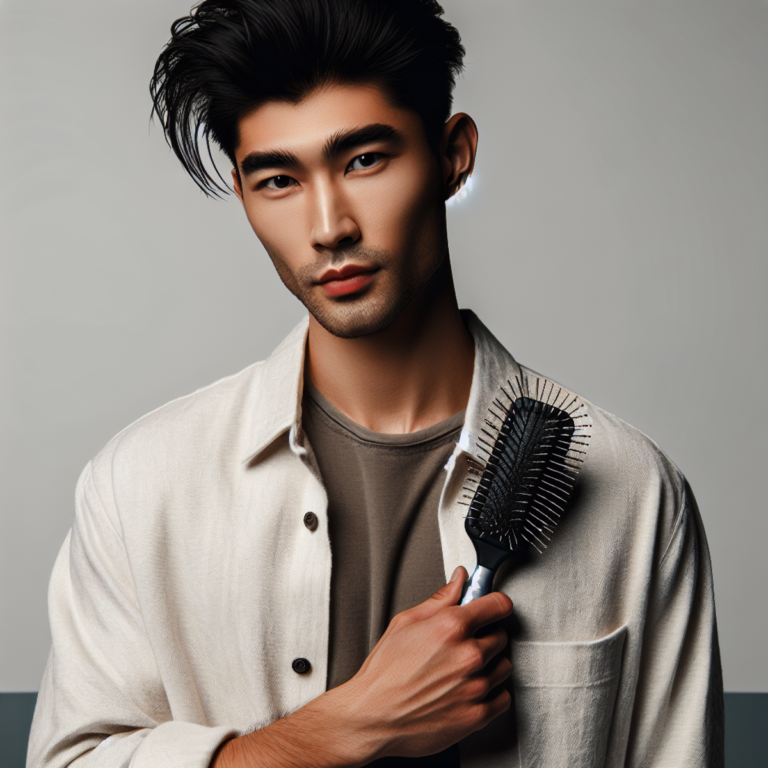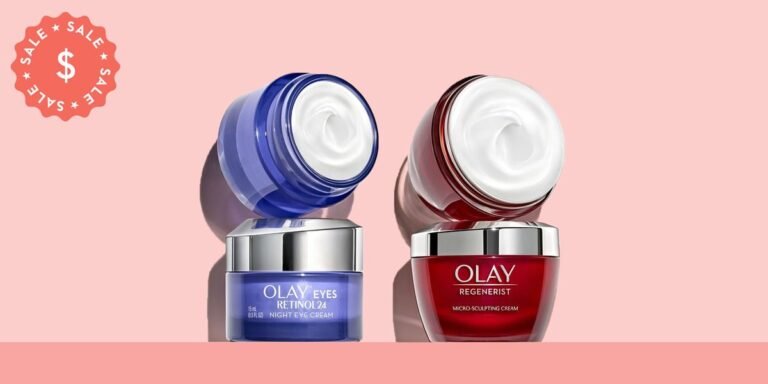How to Protect Hair From Heat Damage for Healthy, Bouncy Strands

Introduction
Heat styling tools such as flat irons, curling wands, and blow dryers have become essential for achieving various hairstyles. However, frequent use of these tools can lead to significant damage to your hair.
The excessive heat from styling tools can strip away the natural moisture of your hair, making it dry, brittle, and prone to breakage. Heat damage can also cause the outer layer of the hair, known as the cuticle, to become rough and raised, resulting in a dull and frizzy appearance.
In this article, we will discuss effective techniques to protect your hair from heat damage and maintain its health and bounce. By incorporating these strategies into your hair care routine, you can enjoy stylish looks without compromising the vitality of your strands.
Understanding Heat Damage
Heat damage occurs when excessive heat is applied to the hair, causing it to become dry, brittle, and prone to breakage. It can happen through various heat styling practices such as blow-drying, flat ironing, curling, and using hot rollers.
The Role of Hair Cuticles
One key element to understand is the role of hair cuticles in protecting the inner layers of the hair shaft. The cuticle is the outermost layer of the hair, consisting of overlapping scales that resemble shingles on a roof. These scales help to seal in moisture and protect the more delicate layers beneath. However, excessive heat can cause these cuticles to lift or become damaged, leaving the inner layers vulnerable to moisture loss and further damage.
How Heat Damages Hair
When heat is applied to the hair, it can lead to moisture loss from within. Heat causes water molecules within the hair shaft to boil, resulting in steam that escapes from the cuticle. This process not only depletes moisture from the hair but also weakens its structure. As a result, the hair becomes dry, frizzy, and more susceptible to breakage.
Tips to Prevent Heat Damage
To prevent heat damage and maintain healthy strands, it’s important to adopt effective techniques and protective measures. By implementing the following tips, you can minimize heat-related harm and preserve your hair’s health:
- Wait for Your Hair to Dry Completely Before Applying Heat: Starting with dry hair helps avoid internal boiling of water molecules within the hair shaft. Towel-dry your hair gently before using any heat styling tools.
- Use Heat Styling Tools with Adjustable Temperature Settings: Opt for tools that allow you to control the temperature settings. Lower heat levels are generally safer for your hair.
- Apply a Protective Barrier Such as a Heat Protectant Spray or Serum: These products create a shield between your hair and the heat, reducing the risk of damage. Apply them evenly throughout your hair before using any heat styling tools.
- Limit Your Use of Heat Styling Tools and Explore Heatless Hairstyling Methods: Giving your hair regular breaks from heat exposure is essential for its overall health. Try alternative methods like heatless curls, such as braiding or using foam curlers, which don’t require heat.
- Nourish Your Hair with Deep Conditioning Treatments Regularly: Deep conditioning provides much-needed hydration and nourishment to heat-damaged hair. Choose a deep conditioner suitable for your hair type and use it regularly to repair and strengthen your strands.
By understanding the process of heat damage and implementing these protective measures, you can minimize the negative effects of heat on your hair. Taking proactive steps to protect your strands will help maintain their health, bounce, and overall vitality. If you’re looking to grow out heat-damaged hair while still using heat, you can explore techniques mentioned in this article. Additionally, if you want to learn more about natural ways to protect your hair from heat damage, you can refer to this resource.
Tips for Protecting Your Hair from Heat Damage
When it comes to protecting your hair from heat damage, there are several important steps you can take. By following these tips, you can help maintain the health and vitality of your hair while enjoying your favorite heat styling tools.
1. Wait for Your Hair to Dry Completely Before Applying Heat
One of the most crucial steps in protecting your hair from heat damage is to ensure that it is completely dry before using any heat styling tools. Wet or damp hair is more vulnerable to damage because the water molecules within the hair shaft can boil when exposed to high temperatures, causing internal damage.
To effectively towel-dry your hair without causing additional damage, follow these tips:
- Gently squeeze out excess water using a microfiber towel or an old t-shirt. Avoid rubbing the towel vigorously against your hair, as this can lead to frizz and breakage.
- Instead of wrapping your hair in a towel turban-style, which can create tension and strain on the strands, gently pat your hair dry.
- Allow your hair to air dry naturally until it is no longer damp before reaching for the blow dryer or heat styling tools.
By ensuring that your hair is thoroughly dried before applying heat, you can minimize the risk of internal boiling and protect your strands from unnecessary damage.
2. Use Heat Styling Tools with Adjustable Temperature Settings and Opt for Lower Heat Levels When Possible
Using heat styling tools with adjustable temperature settings gives you greater control over the amount of heat applied to your hair. It’s important to choose the right heat setting for different styling purposes and hair types.
Consider these guidelines:
- For fine or damaged hair, opt for lower heat settings to prevent excessive damage.
- Thicker or coarser hair may require higher heat settings, but always start with a lower temperature and gradually increase if necessary.
- When using curling irons or straighteners, aim for a temperature between 300°F and 350°F. Higher temperatures can lead to increased damage and breakage.
Remember, it’s always better to start with a lower heat setting and gradually increase if needed. This allows you to achieve your desired style while minimizing the risk of heat damage.
3. Apply a Protective Barrier Such as a Heat Protectant Spray or Serum
Using a heat protectant spray or serum is an excellent way to minimize heat damage. These products create a protective barrier between your hair and the heat, reducing the direct impact on your strands.
Here’s how to properly apply a heat protectant:
- Start with clean, dry hair.
- Hold the heat protectant spray or serum about six inches away from your head and mist it evenly throughout your hair.
- Use your fingers or a wide-tooth comb to distribute the product from root to tip, ensuring every strand is protected.
Heat protectant sprays and serums not only safeguard your hair from excessive heat but also provide added moisture and shine. Incorporating this step into your heat styling routine can make a significant difference in protecting your hair from damage.
4. Limit Your Use of Heat Styling Tools and Explore Heatless Hairstyling Methods
While it may be tempting to reach for your favorite heat styling tools daily, it’s important to give your hair regular breaks from heat exposure. Overusing these tools can lead to long-term damage, including dryness, brittleness, and split ends.
To minimize heat damage, consider these alternatives:
- Embrace heatless hairstyling methods like braiding, twisting, or using foam curlers. These techniques can create beautiful curls or waves without exposing your hair to excessive heat.
- Explore YouTube tutorials for inspiration on achieving different hairstyles without using any heat.
- If you do decide to use heat styling tools, try to limit their use to every other day or less frequently if possible.
By giving your hair regular breaks from heat styling, you can help maintain its health and prevent long-term damage.
5. Nourish Your Hair with Deep Conditioning Treatments Regularly
Deep conditioning treatments are an essential part of any hair care routine, especially if you frequently use heat styling tools. These treatments provide much-needed moisture and nourishment to your hair, helping to repair and strengthen any heat-damaged strands.
When choosing a deep conditioner, consider the following:
- Look for a product that is specifically formulated for heat-damaged or dry hair.
- Consider incorporating a protein treatment into your routine to help rebuild the structure of your hair.
- Use a deep conditioner at least once a week or as recommended by the product instructions.
By regularly nourishing your hair with deep conditioning treatments, you can help restore its health and protect it from further damage caused by heat styling.
By following these tips, you can protect your hair from heat damage and maintain healthy, bouncy strands. Remember to wait for your hair to dry completely before applying heat, use adjustable temperature settings on your styling tools, apply a protective barrier with a heat protectant spray or serum, limit your use of heat styling tools, and nourish your hair regularly with deep conditioning treatments. By prioritizing the health of your hair and implementing these techniques into your routine, you’ll be able to enjoy beautiful and vibrant locks without compromising their well-being.
2. Use Heat Styling Tools with Adjustable Temperature Settings and Opt for Lower Heat Levels When Possible
When it comes to protecting your hair from heat damage, one of the most important factors to consider is the temperature of your styling tools. Using heat styling tools with adjustable temperature settings can significantly reduce the risk of damaging your hair. Here are some key points to keep in mind:
- Advocate for the use of heat tools that allow you to control the temperature: Investing in quality heat styling tools that offer adjustable temperature settings is crucial. This allows you to customize the heat level according to your specific needs and hair type.
- Guide readers on choosing the right heat setting for different styling purposes and hair types: Different hairstyles and hair types require different levels of heat. For example, if you’re using a curling iron or straightener, opting for lower heat levels can still achieve the desired results while minimizing damage. Fine or delicate hair may require even lower temperatures compared to thick or coarse hair.
- Mention the potential risks associated with high heat settings on appliances: It’s important to note that using high heat settings on your styling tools can lead to severe damage such as breakage, dryness, and even burnt strands. High temperatures can cause the hair cuticles to lift, resulting in moisture loss and weakened hair structure. By opting for lower heat levels, you can protect your hair from unnecessary damage.
Using adjustable temperature tools and opting for lower heat levels whenever possible is a proactive approach to protect your hair from heat damage. By customizing the temperature according to your hair’s needs, you can achieve beautiful styles without compromising its health.
Pro Tip: If you’re unsure about the appropriate temperature for your hair type or style, start with a lower setting and gradually increase it until you find the optimal temperature that works best for you.
Remember, protecting your hair from heat damage is all about finding a balance between achieving the desired style and maintaining the health of your strands. By using heat styling tools with adjustable temperature settings and opting for lower heat levels when possible, you’re taking a significant step towards healthier, bouncier hair.
3. Apply a Protective Barrier Such as a Heat Protectant Spray or Serum
When it comes to protecting your hair from heat damage, using a heat protectant spray or serum can be a game-changer. These products create a protective barrier that helps minimize the adverse effects of heat styling on your hair. Here’s why and how you should incorporate them into your hair care routine:
Benefits of Heat Protectant Products
- Heat protectant sprays and serums form a shield over the hair cuticle, reducing moisture loss and preventing damage from high temperatures.
- They help maintain the natural elasticity of the hair, keeping it supple and less prone to breakage.
- Some heat protectants also contain ingredients that offer nourishing benefits, contributing to overall hair health.
Proper Application
- Start with clean, dry hair before applying the heat protectant product.
- Depending on the product type, spritz the heat protectant spray evenly over your hair from root to tip, or dispense a small amount of serum and distribute it through your strands.
- Use a wide-tooth comb to ensure even distribution of the product from roots to ends.
- Allow the product to set for a few minutes before proceeding with heat styling.
By consistently using a heat protectant spray or serum, you can significantly reduce the risk of heat damage while maintaining healthy, bouncy strands. Prioritizing this step in your styling routine will contribute to the long-term well-being of your hair.
4. Limit Your Use of Heat Styling Tools and Explore Heatless Hairstyling Methods
To protect your hair from heat damage and keep it healthy, it’s important to take regular breaks from using heat on your hair. While heat styling tools can help you achieve the look you want, using them too often can make your hair dry, brittle, and prone to breakage. By using heat styling tools less frequently and trying out heatless hairstyling methods, you can give your hair a rest while still looking amazing.
Alternative Ways to Style Your Hair Without Using Heat
Here are some other ways you can style your hair without relying on heat:
- Braiding: Braids are not only trendy but also a great way to protect your hair from heat damage. Whether you choose a classic French braid, fishtail braid, or Dutch braid, this versatile hairstyle can give you beautiful waves or curls without any heat. Simply braid your damp or dry hair before going to bed and undo the braids in the morning for effortless texture.
- Foam Curlers: Foam curlers are a fantastic option for creating curls or waves without using heat. These soft rollers are gentle on your hair and can provide long-lasting results. To use foam curlers, apply a styling product to slightly damp hair, wrap small sections of hair around the curlers, and secure them in place. Leave them in overnight or until your hair is completely dry for gorgeous curls.
- YouTube Tutorials: The internet is full of wonderful tutorials that teach different ways to style your hair without using heat. From techniques like sock curls or headband curls for no-heat curls to overnight braids for beachy waves, there are plenty of options to choose from. Look for tutorials that are suitable for your hair type and desired style, and have fun experimenting with new techniques.
By making these heatless hairstyling methods part of your routine, you can reduce how often you rely on heat styling tools and lower the chances of heat damage. Always remember to prioritize the health of your hair and give it the care it needs.
“Using heat styling tools less often not only protects your hair from damage but also helps it maintain its natural moisture and flexibility. Trying out heatless hairstyles not only gives your hair a break but also allows you to be more creative and versatile with your looks.”
5. Nourish Your Hair with Deep Conditioning Treatments Regularly
When it comes to protecting your hair from heat damage, deep conditioning treatments are essential for keeping it healthy and strong. Here’s why you should make regular deep conditioning a priority:
1. Repair and Replenish
Deep conditioning treatments are specially formulated to go deep into the hair and provide nourishment where it’s needed most. This helps to fix any issues caused by heat styling and restore moisture that has been lost, bringing back the natural shine and resilience of your hair.
2. Strengthen and Protect
By giving your hair regular doses of deep conditioning goodness, you’re actually making it stronger from the inside out. This added strength makes your hair more resistant to heat damage, so you can continue to style without worrying about causing harm.
When looking for a deep conditioner, consider these factors:
- Your hair type
- Specific needs (e.g., color-treated, dry)
- Products designed for heat-damaged hair
Choose a product that ticks all the boxes and provides intense hydration along with repair benefits. It’s also important to adjust the frequency of your deep conditioning treatments based on your hair’s condition:
- For severely damaged hair, more frequent treatments may be necessary initially
- Once your hair starts to improve, you can switch to less frequent maintenance treatments
This approach will help address existing damage while preventing future issues, resulting in healthier and happier strands overall.
Healthy hair is not just about appearance; it’s about how it feels and behaves. Deep conditioning is the secret weapon that can transform your hair from dull and lifeless to vibrant and full of life.
The writing style is informative and direct, using a clear and concise vocabulary that is easy to understand. The content delivers practical information in a clear and relatable manner. The tone is confident yet humble, emphasizing authenticity and transparency. It frequently uses the second-person pronoun “you” to engage the reader directly. The writer often uses comparative phrases to evaluate different products or techniques, providing useful insights for the readers. Repetition is used as a tool for emphasis on key points.
Best Practices for Heat Styling Your Hair Safely
When it comes to heat styling your hair, it’s essential to prioritize hair protection to minimize damage and maintain healthy, bouncy strands. Here are some best practices to follow:
6. Invest in Quality Heat Tools with Ceramic or Tourmaline Technology
One of the most effective ways to protect your hair from heat damage is by investing in quality heat tools that incorporate ceramic or tourmaline materials. These materials offer several advantages:
- Even Heat Distribution: Ceramic and tourmaline technology distribute heat evenly across the hair, reducing the risk of hot spots that can lead to burns or excessive heat exposure.
- Reduced Damage Potential: Compared to traditional metal-plated tools, ceramic or tourmaline plates generate less friction and cause minimal damage to the hair cuticles.
When selecting ceramic-plated irons or straighteners, keep the following tips in mind:
- Look for products that clearly state they have ceramic or tourmaline plates.
- Consider the size of the tool based on your hair length and desired style.
- Check if the tool offers adjustable temperature settings for better control.
7. Maintain a Safe Distance Between the Hairdryer Nozzle and Your Hair
Proper technique while using a hairdryer is crucial for preventing heat damage. To ensure safe heat styling:
- Hold the hairdryer nozzle about 15-20 cm away from your head. This distance helps disperse the heat instead of directly exposing your hair to high temperatures.
- Avoid holding the dryer too close or pointing it directly at one spot for an extended period. Continuous concentrated heat can lead to excessive drying and damage.
8. Utilize the Cool Shot Button on Your Hairdryer to Set Styles
Hairdryers often come with a cool shot feature, which emits cool air instead of hot air. This function can be beneficial for holding hairstyles in place without relying on excessive heat. Here’s how you can make the most of the cool shot button:
- After styling your hair with heat, finish by using the cool shot feature to set the style.
- Gently blast cool air all over your hair, focusing on areas that need extra hold or definition.
- The cool air helps close the hair cuticles, sealing in the style and reducing frizz.
By incorporating these best practices into your heat styling routine, you can minimize damage and protect your hair from the negative effects of excessive heat exposure. Remember to always prioritize hair protection and invest in quality tools that prioritize the health of your strands.
7. Maintain a Safe Distance Between the Hairdryer Nozzle and Your Hair
When it comes to protecting your hair from heat damage during styling, maintaining a safe distance between the hairdryer nozzle and your hair is crucial. This simple technique can significantly reduce the risk of excessive heat exposure and potential damage.
To effectively diffuse the airflow during drying and minimize heat impact on your strands, consider the following techniques:
- Hold the hairdryer at least 6 inches away from your hair to ensure that the heat is dispersed over a larger area, reducing direct exposure.
- Utilize a lower heat setting on the hairdryer to lessen the intensity of the airflow while still achieving effective drying results.
- Move the hairdryer continuously to prevent concentrated heat exposure in one area, promoting even drying and minimizing potential damage.
By maintaining a safe distance and employing these airflow diffusion techniques, you can protect your hair from unnecessary heat stress, contributing to its overall health and vibrancy.
8. Use the Cool Shot Button on Your Hairdryer to Set Styles
The cool shot button on your hairdryer can be a game-changer when it comes to setting your styles without subjecting your hair to excessive heat. This feature is designed to release a burst of cool air that helps lock your hair in place, providing a longer-lasting hold without the need for additional heat exposure.
When you’ve finished styling your hair with heat, whether it’s through blow-drying or using hot tools, using the cool shot button can help seal the cuticles and set your hairstyle. The sudden blast of cool air helps to solidify the structure of your hair, allowing it to maintain its shape and bounce throughout the day. This not only reduces the reliance on heat for styling but also minimizes the risk of heat damage to your strands.
By incorporating the cool shot feature into your styling routine, you can achieve the desired look while prioritizing the health and protection of your hair. Whether you’re aiming for sleek straight locks or voluminous curls, utilizing the cool shot button can be an effective way to enhance the longevity of your styles without compromising on hair health.
Remember, while heat styling is a common practice, finding ways to minimize heat exposure and protect your hair is essential for maintaining its vibrancy and strength. The cool shot button serves as a valuable tool in this endeavor, offering a gentle yet effective method for securing your hairstyles while reducing the potential impact of excessive heat.
So next time you reach for your hairdryer, consider making use of the cool shot button as part of your heat styling routine. It’s a simple yet impactful way to safeguard your strands and promote healthier, bouncier hair in the long run.
Conclusion
Protecting your hair from heat damage is essential for maintaining healthy, bouncy strands. By following the tips and techniques discussed in this article, you can effectively minimize the negative effects of heat styling on your hair. Remember, prioritizing hair protection and incorporating these practices into your routine are key steps towards long-term hair health and vibrancy. Embrace these strategies and enjoy the beautiful, resilient qualities of your well-cared-for hair.










